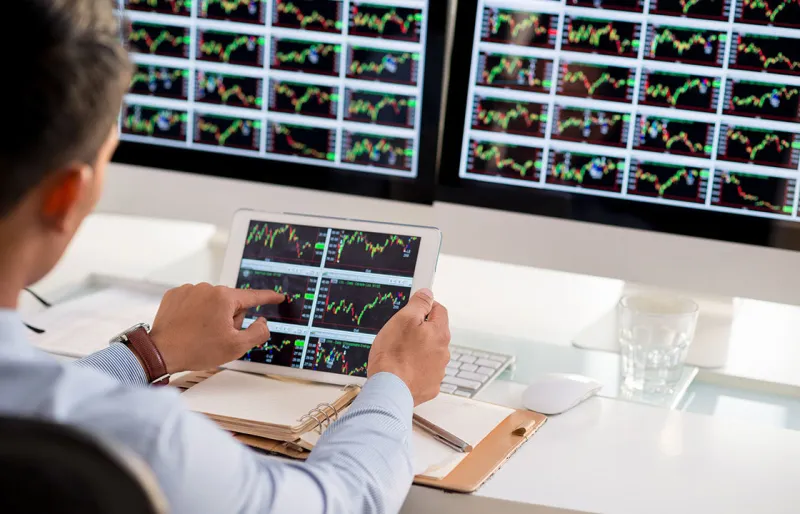A sell-side trader has information to share with a buy-side counterpart. Both traders are aware they work in a business that, before the introduction of electronic trading, traditionally relied heavily on relationships – imagery of the controlled mayhem of trading floors and traders simultaneously working multiple phone lines is iconic – but these days that interaction is easy to sidestep. But should it be? Is there not something to be gained from the human touch factor?
The sell-side trader has an idea to optimize a routing protocol for an order, so they invite the buy-side trader to log in to a trading portal to review and discuss the proposed optimizations – a discussion that will be informed by historical analytics of the potential routing venues. They review the analytics, agree on the optimizations, save the changes, and the algorithm’s behavior is optimized in real-time. Then, over the course of the day they monitor its performance in real-time. This isn’t a hypothetical example – it’s happening.
“We’re seeing this type of relationship – the sharing of ideas and collaboration – more and more, whereas not too long ago they didn’t exist at all,” says Joe Wald, CEO and Founder of Clearpool, a provider of holistic electronic trading technology solutions. On its Algorithmic Management System (AMS), Clearpool currently has hundreds of such active relationship sharing engagements where buy- and sell-side traders share strategies, orders, or both.
Active relationships, such as Wald describes, are crucial for many reasons, not least of which is institutional traders rely on their brokers’ ability to execute large block trades with minimal impact. Having the ability to customize routing protocols and curate the most efficient executions is of real value to this constituency. In this context, Wald believes “a real relationship allows the two parties to work together to determine exactly how they want an algorithm to seek out sizable liquidity and from which venues.”
Technology complements relationships, seeds renewed trust
Given its complex nature and structure, today’s electronic-driven marketplace practically begs for this type of close collaboration to identify and take advantage of opportunities as they emerge. It’s a case of technology empowering traders by complementing their skills and enhancing relationships rather than reducing the need for them – and both parties becoming more productive and efficient.
“By using tools such as real-time analytics, as well as having access to venue analysis and different levels of transaction costs through additional tools, the buy- and sell-sides can literally work together to create an optimal trading strategy by configuring how that strategy works within the microstructure,” says Wald. By monitoring the strategy in real time, both parties can see if it’s performing as expected. If it’s diverging from what they anticipated, other tools on the Clearpool platform allow the partners to work with the emerging reality and change things on the fly.
Significantly, this reaffirmation that the human touch matters is most visible among sell-side traders in the regional, non-bulge bracket space who have maintained a tremendous level of trust with the buy-side. This stands in stark contrast to the erosion of trust many Wall Street firms have encountered due to conflicted routing protocols, market fragmentation and a preponderance of high-frequency players. Where trust never waned, technology is helping turn trust into action.
“In those relationships,” says Wald, “the buy-side really believes their brokers are genuine advocates in achieving best execution. But trust alone can’t produce anything meaningful out of the execution quality side of the equation. When the sales trader didn’t have the tools to actually get and share color on what’s happening in the marketplace, the true value of that trusted relationship couldn’t be extracted. That’s what where we’re seeing a real renaissance within the sales trader and buy-side trader relationship. Now that this trusting relationship has the right tools, they can make actionable decisions that benefit them from an execution quality standpoint.”
The right balance of technology and the human touch has been the missing piece of the trading puzzle in recent years. Sell-side firms have begun to recognize this, and traders who have embraced technology’s capacity to foster productive collaboration have experienced more opportunities to increase business with their buy-side counterparts. “We’ve seen that across the board with clients who have adopted the technology,” says Wald.




